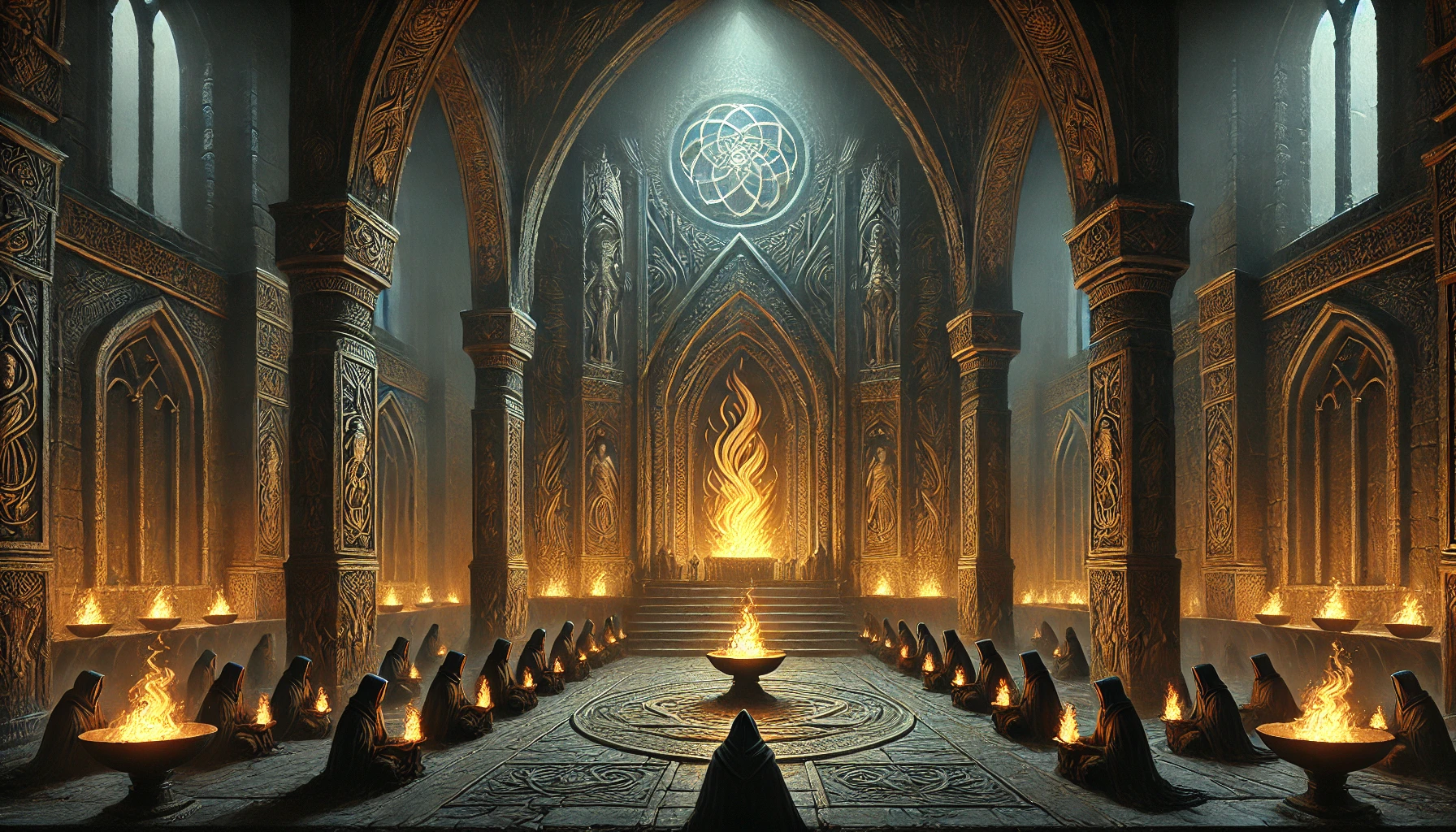Independent Sects of the Lady in Mondavel
Though Mondavel has been cast out from the Faith, it remains a land of believers. While the Ecclesiarchy no longer recognises the Free State, many of its people still revere the Lady and the Twelve Saints, though in ways that often differ from orthodox doctrine.
Freed from the rigid structure of Clairvaux’s theocracy, new interpretations of faith have flourished—some merely divergent, others openly heretical in the eyes of the Ecclesiarchy. While the Free State has allowed these sects to grow, relations between them and the Ecclesiarchal temples that still stand in Mondavel are fraught with tension.
Many of these sects remain true to the Lady’s worship, but their doctrinal differences, attitudes toward magic, and rejection of Ecclesiarchal authority have created a fractured religious landscape where faith is hotly contested, and devotion is sometimes a source of conflict rather than unity.
The Keepers of the Silent Flame
- Core Belief: The Lady reveals Her will not through priestesses or scripture, but through personal revelation to those who seek Her in silence.
- Distinctive Practices: Silent vigils, trance-like meditation, ritual purification through sacred flame.
The Order of the Twelvefold Path
- Core Belief: The Twelve Saints are not simply the Lady’s servants—they are aspects of Her very being, and to follow them is to worship the Lady in the only way mortals can understand.
- Distinctive Practices: Devotion to a personal Saint, temples structured around the Twelve rather than the Lady, dismissal of direct worship of the Lady as unnecessary.
The Sable Covenant
- Core Belief: The Lady’s mercy is not infinite—faith must be defended, purified, and protected from those who seek to corrupt it.
- Distinctive Practices: Secret gatherings, masked ceremonies, punishments of perceived heretics and blasphemers.
The Children of the Dawn
- Core Belief: The Lady does not favour gender or bloodline, but judges by virtue and discipline alone.
- Distinctive Practices: Monastic training, ascetic lifestyle, physical and mental discipline, acceptance of men into faith leadership.
The Wayfarers of the Lady
- Core Belief: Faith is a journey, not a destination—the Lady’s will is found on the road, in the wild places, in the lessons learned from the world itself.
- Distinctive Practices: Pilgrimage, wandering preachers, storytelling, rejection of rigid temple-based worship.










Comments